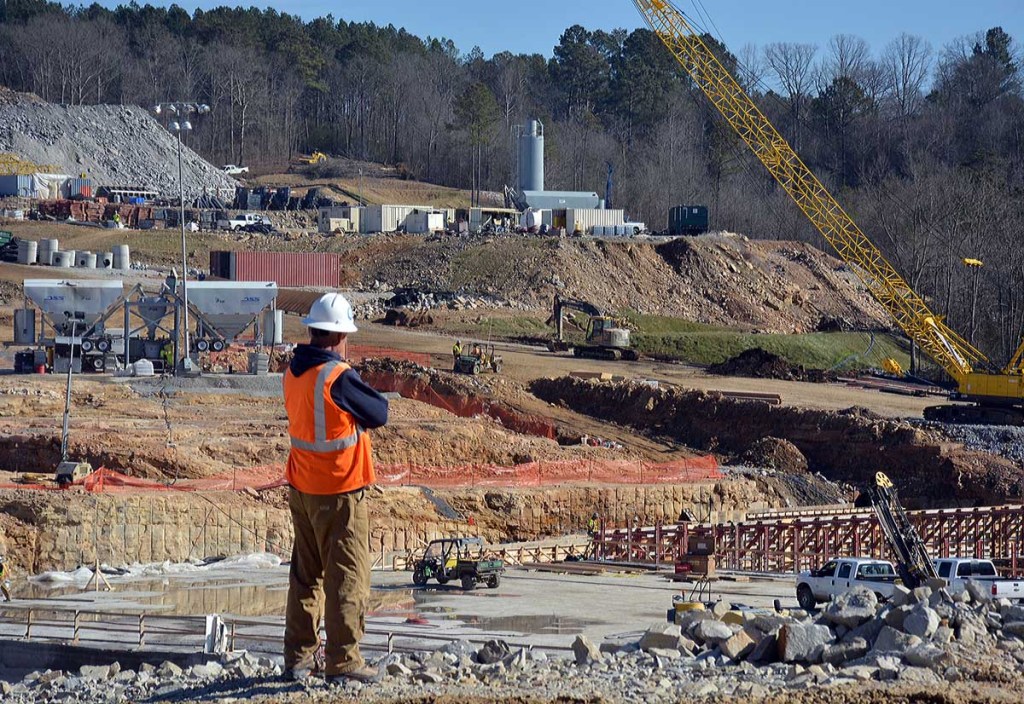Duck River Dam construction: ‘Quite a bit of progress’
Published 5:45 am Friday, March 6, 2015

- In this January 2015 file photo, Rick Riker, with engineer of record Ch2M Hill, looks out over the Duck River Dam construction site.
Construction continues on the Duck River Dam, and officials say there has been “quite a bit of progress” made toward the completion of the Cullman area’s new secondary water source.
Teams are working to lay the foundation and base for the roller-compacted concrete (RCC) dam, which will eventually create a 640-acre lake with a 32-million-gallon-per-day capacity in northeast Cullman County. Tom Harwell, with engineer or record CH2M Hill, noted crews are moving quickly to build up the dam now that excavation work is largely complete.
Within the next few months, the center of the dam should rise high into the air as crews continue layering roller-compacted concrete. The lake and water quality will be similar to the area’s other main water source, Lake Catoma, and work in conjunction to provide water.
“It shouldn’t require any major modifications to the treatment plant,” Steve Newton, with CH2H Mill, added.
The dam design will be a hybrid, with roller-compacted concrete in the center and earthen wings. Three massive piles of roller-compacted concrete make up one side of the construction site, which will eventually be used to construct the dam.
“They almost have literal mountains of aggregate there now,” Newton said.
Colorado-based ASI Constructors had the low, responsible bid of $51.79 million for the current phase of the project, which includes construction of the dam and spillway. ASI has built more than 100 dams, several of which had a similar design to Duck River.
The city utilities board is also in the early phases of considering how to stock the eventual lake, and recently hosted a presentation from American Sport Fish about some of the different options.
The total project, which had to be redesigned due to incompatible soil in some areas, is estimated to cost a total of approximately $110 million. Officials say they recently hit a milestone in regards to excavation, which essentially means they’ve passed the point where additional “surprises” related to the underground rock could cause additional problems.
City clerk Wes Moore said the project is currently “on budget,” and officials should have a better grasp on the exact final cost by early 2016.
The Duck River operation represents one of the largest active construction projects in the nation, and ASI is manufacturing much of the materials on-site.
The project has been hit with a handful of Alabama Department of Environmental Management (ADEM) violations in recent months, though officials believe they’ve solved those potential water quality concerns.
The team uses a mix of erosion control, sediment ponds and other tactics to control water quality at the site. Regular testing is also performed, and officials say water quality has remained solid throughout construction up to this point.
When heavy rains do hit the site, a series of man-made ponds are use to store and filter runoff, to ensure it doesn’t dump sediment into the creeks and streams.


